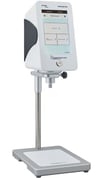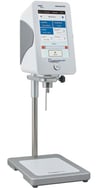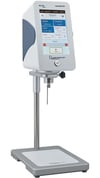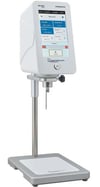Sales, Repair, and Calibration Services for Lamy Rheology Instruments
Lamy Instruments include Viscometers, Rheometers, Gel Timers, and Texture analyzers
Viscosity testing is one of the more popular ways of determining the flow characteristics of a liquid. Gathering viscosity data helps manufacturers predit how their products will behave in the real world, and can be used to streamline production and transportation processes.
Viscometers from Lamy Rheology Instruments utilize springless technology, which sets them apart from other rotational viscometers common on the market today. This specialized technology allows the insturment to measure an extremely wide range of viscosity. You can meet the specifications of your product - or range of products - with a selection of spindles, temperature control and software. Just one instrument can handle your full viscosity range.
While other viscometers often require daily calibration, these spring-less Lamy Viscometers only need to be calibrated once a year. With the easy-to-use touchscreen interface, you'll be up and running in no time.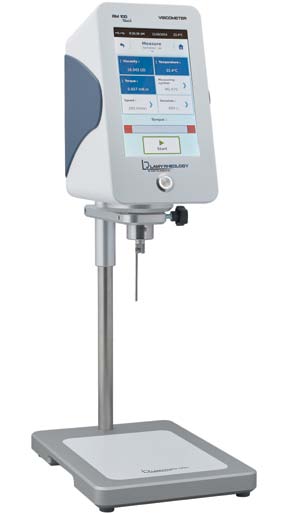
Common Applications for Viscosity Testing with Rotational Viscometers
- Food texture and consistency
- Adhesive dispensation and spreadability
- Lubricant effectiveness and transportability
- Concrete self-leveling and pumping behavior
- Cosmetics feel and flow
- Pharmaceuticals
A note about viscosity:
The formula for measuring viscosity is fairly simple:
viscosity = shear stress / shear rate
The result is typically expressed in centipoise (cP), which is the equivalent of 1 mPa*s (millipascal second).
- Shear stress is the force per unit area required to move one layer of fluid in relation to another.
- Shear rate is the measure of the change in speed at which intermediate layers move with respect to one another.
Newtonian vs. Non-Newtonian Fluids
Isaac Newton, the man to discover this formula, believed that at a given temperature and shear stress, the viscosity of a fluid would remain constant regardless of changes to the shear rate.
He was only partly right. Some fluids, such as water and honey, do behave this way. We call these fluids Newtonian fluids. Most fluids have viscosities that change depending on the shear rate. These are called Non-Newtonian fluids.
Just to make it even more complicated, there are five types of non-Newtonian fluids: thixotropic, rheopectic, pseudoplastic, dilatant, and plastic (see the video, right). Different considerations are required when measuring each of these fluid types.
Rotational Viscometers
Rotational viscometers, like the ones from Lamy Rheology Instruments, test viscosity by measuring the torque required to turn a spindle in a sample of fluid at a known speed. These commonly-used viscometers are capable of measuring Newtonian and Non-Newtonian Fluids in a wide viscosity range.
B-One Touch Viscometer (basic) |
First Touch Viscometer (midrange) |
RM 100 Touch Viscometer(flagship model) |
RM 200 Touch Rheometer(expert model)
|

